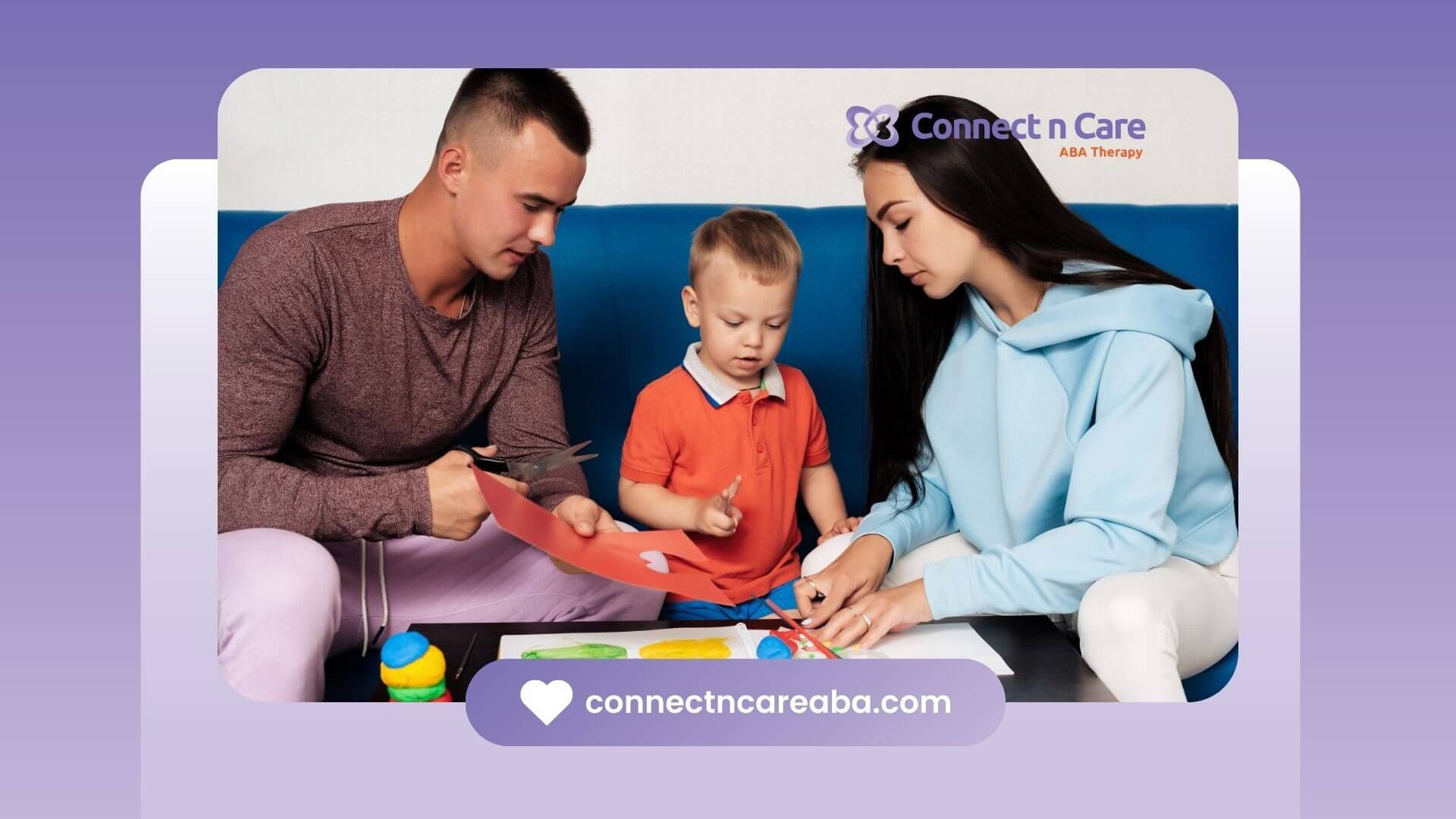Why Early Intervention for Autism Is Crucial
Early intervention is a cornerstone of successful outcomes for children with Autism Spectrum Disorder (ASD). It refers to specialized therapies and support introduced during the first few years of life, typically before the age of five. These formative years are a period of rapid brain development when learning new skills and adapting to challenges is most effective.
For children with autism, early intervention addresses developmental challenges like communication delays, difficulty with social interactions, and behavioral concerns. By introducing structured support during this critical period, children can develop foundational skills that help them thrive later in life.
Numerous studies underscore the transformative power of early intervention. Research has consistently shown that addressing developmental concerns early not only improves short-term outcomes, like language development and social skills, but also lays the groundwork for long-term success in school, relationships, and independence. Waiting to start therapy risks missing this developmental window, making progress slower and more challenging.
Early intervention isn’t just beneficial for children—it also provides families with the tools and resources they need to support their child effectively. From understanding autism to implementing strategies at home, early intervention empowers families to become active participants in their child’s progress.
Key Success Statistics
The effectiveness of early intervention is well-documented through decades of research. Below are key statistics that highlight its remarkable impact:
Cognitive and Developmental Gains
50-75% of children who receive intensive Applied Behavior Analysis (ABA) therapy for two or more years show significant improvements in cognitive and adaptive functioning. This means they can better navigate everyday tasks and interactions, which might have seemed unattainable before therapy.
A 2018 meta-analysis found that children who began early intervention before age three experienced an average 17-point increase in IQ scores compared to those who started later. These gains in cognitive functioning often translate to better academic performance and problem-solving skills.
Language and Communication Improvements
Communication is a core challenge for many children with autism, and early intervention has a profound impact in this area.
Research shows that up to 90% of children receiving early intervention develop functional communication skills, whether verbal or through alternative communication methods like sign language or speech-generating devices.
A 2021 study demonstrated that children receiving ABA therapy were 70% more likely to develop verbal communication skills within two years, helping them express their needs and connect with others.
Behavioral Improvements
Challenging behaviors, such as tantrums, aggression, or self-injury, often stem from communication barriers or sensory sensitivities. Early intervention addresses these behaviors by teaching alternative ways to express frustration or cope with sensory challenges.
Within just six months of starting therapy, children in early intervention programs experience a 60% reduction in challenging behaviors, enabling them to participate more fully in family life, school, and social settings.
Mainstream Education Readiness
One of the long-term goals of early intervention is preparing children for success in mainstream educational settings.
Approximately 30-40% of children in early intervention transition to mainstream classrooms with minimal additional support, showing significant gains in independence and learning readiness.
Longitudinal studies reveal that children who begin therapy by age two are three times more likely to thrive in inclusive educational environments compared to those who start later.
Parental Satisfaction and Economic Impact
Early intervention doesn’t just benefit the child—it transforms the entire family dynamic.
Over80% of families report increased quality of life and reduced stress levels after participating in early intervention programs. Parents often feel more confident and capable of supporting their child’s unique needs.
The economic benefits of early intervention are equally compelling. By reducing the need for long-term special education and intensive care, early intervention saves an estimated $1.3 million per child over their lifetime.
Evidence-Based Interventions
Early intervention programs incorporate a variety of evidence-based strategies to address the diverse needs of children with autism. These interventions are carefully tailored to each child’s strengths and challenges, ensuring meaningful progress.

Applied Behavior Analysis (ABA)
ABA is the most extensively researched therapy for autism and forms the backbone of many early intervention programs. It focuses on teaching skills in small, manageable steps while reinforcing positive behaviors. ABA is highly individualized, making it effective for a wide range of needs, from communication and social skills to reducing challenging behaviors.
Speech and Occupational Therapy
Speech therapy enhances language development, helping children communicate their needs and feelings more effectively. Occupational therapy, on the other hand, focuses on improving motor skills, sensory integration, and independence in daily tasks. When combined with ABA, these therapies create a well-rounded approach to skill-building.
Parent Training
Parents play a critical role in their child’s progress. Early intervention programs often include parent training to ensure strategies learned in therapy are consistently applied at home. This consistency accelerates the child’s development and fosters a supportive environment for learning.
Social Skills Training
For children with autism, navigating social interactions can be challenging. Early intervention often incorporates activities that promote peer interaction, teaching essential social skills like sharing, taking turns, and recognizing social cues.
Real-Life Impact
The numbers tell a powerful story, but it’s the real-life transformations that truly highlight the value of early intervention.
Take Ethan, for example. Diagnosed with autism at two years old, Ethan struggled with severe tantrums and limited communication. His parents enrolled him in an ABA-based early intervention program, which included speech therapy and parent training. Within a year, Ethan began using short phrases to express his needs, reducing his frustration and tantrums by 70%.
Ethan’s progress extended beyond his family life. By age four, he was participating in group activities at preschool, something his parents once thought impossible. Stories like Ethan’s demonstrate that early intervention is not just about improving skills—it’s about unlocking potential and giving children the tools to thrive.
Take Action
The evidence is clear: early intervention is one of the most effective ways to support children with autism. By starting therapy early, families can help their children build the skills they need to succeed in school, relationships, and life.
If you suspect your child might have autism or has already been diagnosed, now is the time to act. Empower your child’s future with evidence-based early intervention. Contact Connect n Care today to learn more about how we can help your family take the first step toward a brighter future.
Frequently Asked Questions
What does early intervention for autism include?
Early intervention typically includes therapies like Applied Behavior Analysis (ABA), speech therapy, occupational therapy, and parent training. These therapies are designed to address communication, behavior, and developmental challenges in young children with autism.
How do I know if my child needs early intervention?
If your child shows signs of delayed communication, limited social interaction, or repetitive behaviors, consider seeking an evaluation. Early diagnosis and intervention can significantly improve developmental outcomes.
Is early intervention effective for all children with autism?
While progress varies depending on the child, early intervention has been shown to benefit children across the autism spectrum. The key is tailoring the approach to the child’s specific strengths and needs.
Sources:
- Transforming the Workforce for Children Birth Through Age 8: A Unifying Foundation. (2015).
National Research Council and Institute of Medicine. - Gitimoghaddam, M., et al. (2022).
Applied Behavior Analysis in Children and Youth with Autism Spectrum Disorders: A Scoping Review.
Journal of Autism and Developmental Disorders. - Reichow, B., et al. (2018).
Early Intensive Behavioral Intervention (EIBI) for Young Children with Autism Spectrum Disorders (ASD).
Cochrane Database of Systematic Reviews. - Davidoff, B. E. (2017).
AAC With Energy—Earlier: Research Shows That Children with Communication Challenges Do Best When Introduced to Augmentative and Alternative Communication as Early as 12 Months.
Journal of Early Intervention. - Verger, S., et al. (2021).
Satisfaction and Quality of Life of Families Participating in Two Different Early Intervention Models in the Same Context: A Mixed Methods Study.
International Journal of Disability, Development, and Education.









